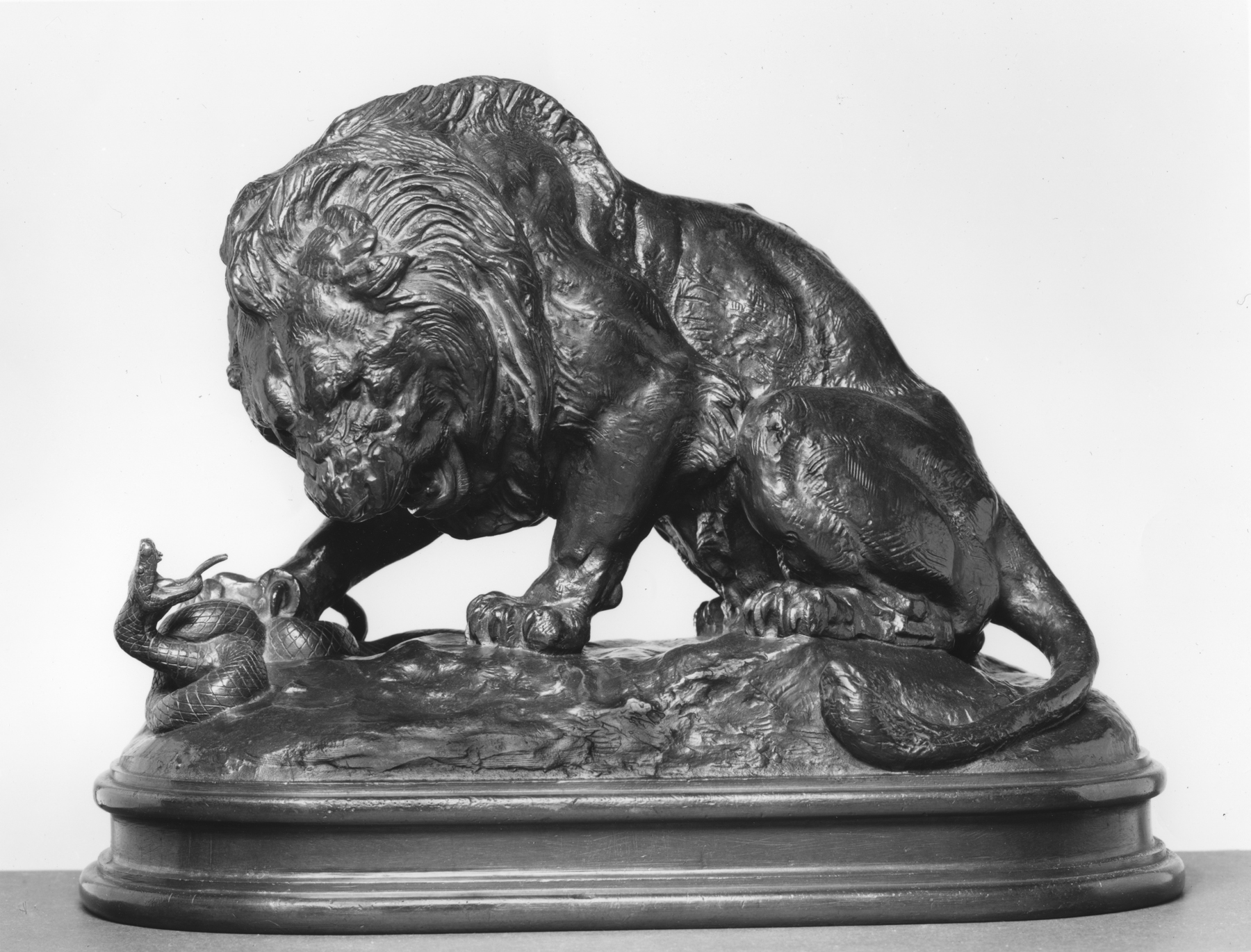Lion and Snake, No. 1
(18th and 19th Centuries )
First exhibited as a plaster cast at the Paris Salon of 1833, Lion and Serpent may be regarded as one of Barye's most significant masterpieces. In showing an animal subject rather than a figurative work, Barye broke with prevailing academic conventions. King Louis-Philippe commissioned a bronze cast of the statue and had it placed in the gardens in front of the Tuileries Palace. The sculpture was subsequently reworked and cast in various sizes.
Inscription
Provenance
Provenance (from the French provenir, 'to come from/forth') is the chronology of the ownership, custody, or location of a historical object. Learn more about provenance at the Walters.
William T. Walters, Baltimore, by 1889; Henry Walters, Baltimore, 1894, by inheritance; Walters Art Museum, 1931, by bequest.
Exhibitions
| 2024-2025 | Reinstallation 2024: Art and Process. The Walters Art Museum, Baltimore. |
| 1995 | The Allure of Bronze. The Walters Art Gallery, Baltimore. |
| 1995 | Parallels and Precedents: Baltimore's George A. Lucas Collection. Baltimore Museum of Art, Baltimore. |
| 1889-1890 | The Works of Antoine-Louis Barye. American Art Gallery (New York), New York. |
Geographies
France, Paris (Place of Origin)
Measurements
H: 10 1/4 × W: 7 1/16 × L: 14 1/8 in. (26 × 18 × 35.9 cm)
Credit Line
Acquired by William T. Walters
Location in Museum
Not on view
Accession Number
In libraries, galleries, museums, and archives, an accession number is a unique identifier assigned to each object in the collection.
In libraries, galleries, museums, and archives, an accession number is a unique identifier assigned to each object in the collection.
27.157



